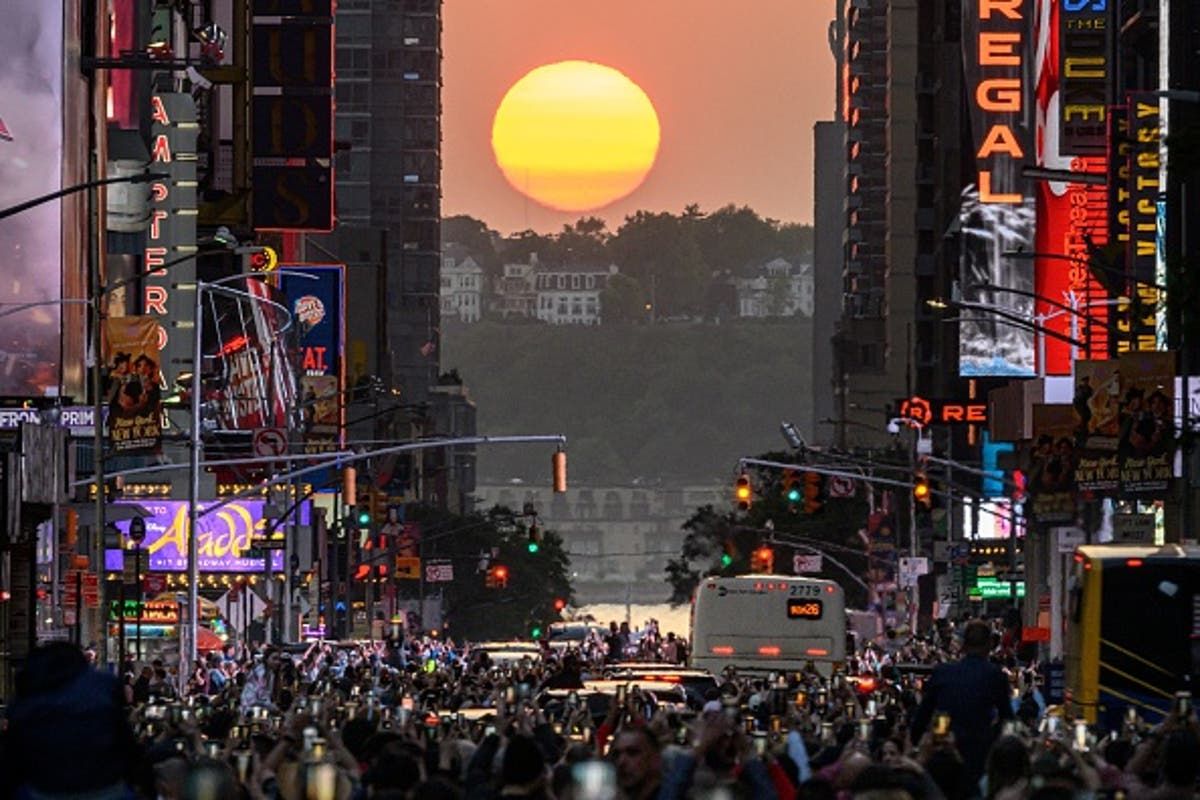Twice a year there is a sunset that aligns perfectly with New York City's gridded street system, called Manhattanhenge.
The term “Manhattanhenge” was coined in 1997 by astrophysicist Neil deGrasse Tyson in an article in the magazine Natural History. He had visited the Stonehenge structure in England as a teenager and later determined that the way the sun hits the structure during the summer solstice could be replicated in Manhattan a few weeks before the solstice.
“I visited Stonehenge as a child, aged 15, on an expedition… and that stuck with me, which is why I named this phenomenon after Manhattan, where the sun sets along the street grid… I named Manhattanhenge, sort of going back to my early days thinking about the alignment of the sun and the structures we could build,” Tyson had said at the time.
Manhattanhenge, also known as the Manhattan Solstice, is known for attracting an influx of tourists and photographers trying to capture the photogenic sunset.
According to AccuWeather, the best days to see Manhattanhenge in 2024 will be at sunset on Wednesday, May 29, around 8:12 p.m., and Friday, July 12, around 8:20 p.m.
A “half sun” will also be available and visible for viewing on Tuesday, May 28 at 8:13 p.m. and Saturday, July 13 at 8:21 p.m., according to the American Museum of Natural History.
As with an eclipse, there is a chance that clouds will cover the sunset, making it more difficult to see and people should avoid looking directly at the sun to avoid eye damage.
For the best sunset views, certain streets will allow the sunset to be more visible, including 14th, 23rd, 34th, 42nd and 57th Streets. Although it is important to note that 34th and 42nd Streets could be a little busier with people trying to catch a glimpse of the Empire State and Chrysler buildings.
Elevated parks like the Chelsea High Line are also prime spots to watch the sunset.
It's also possible to see Manhattanhenge across the East River in the Long Island City section of Queens.
Dr. Jackie Faherty recommended in The New York Times May everyone who plans to see the sunset find a wide path in the city.
“You have to be in the middle of the street to fully appreciate it,” the astronomer, who works with Tyson, told the newspaper. Times. “It's like a big science festival that will take place in the city.”
But New York City's Manhattan borough isn't the only U.S. city that has its own version of a “henge.” The event can occur in any city where the street orientation aligns with the sun.
Chicago has its own Chicagohenge, which usually occurs around the spring and fall equinoxes (March and September).
San Francisco also has its own interpretation of the event, called the California Henge, where the sun aligns with the city streets and the San Francisco-Oakland Bay Bridge.












